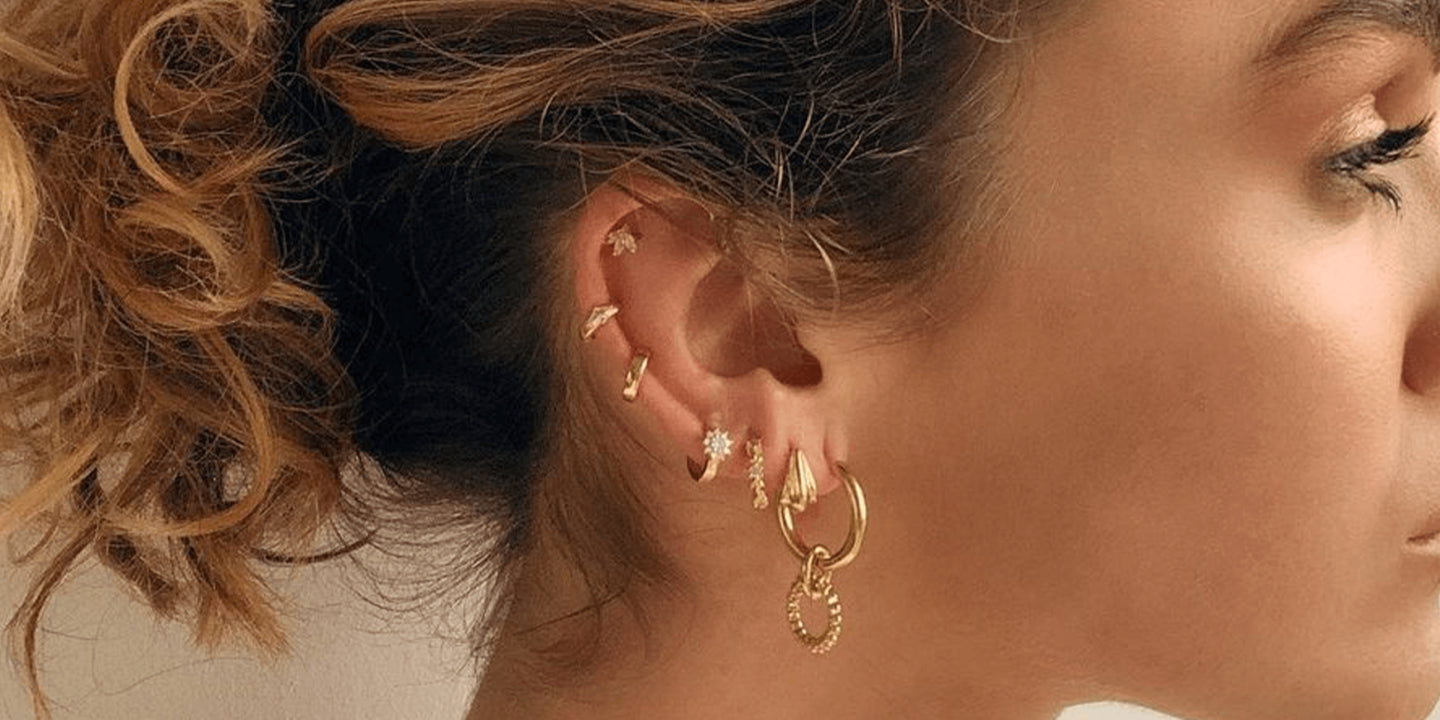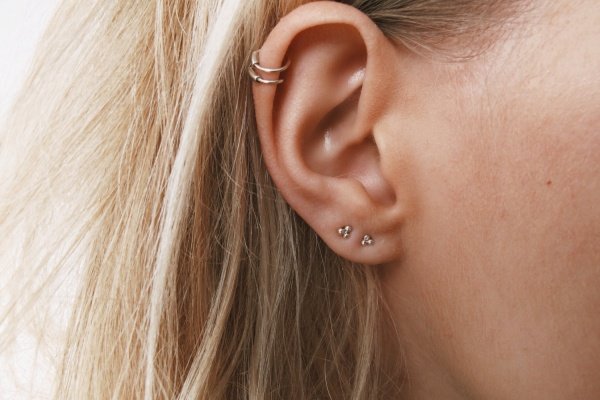Free shipping for USA orders over $65
Free shipping for USA orders over $65
Shop Jewelry
- 14K Gold Jewelry
- Sterling Silver Jewelry
- Titanium Jewelry
- Niobium Jewelry
- Belly Rings
- Cartilage Earrings
- Drop Earrings
- Eyebrow Rings
- Hoop Earrings
- Huggie Earrings
- Industrial Barbells
- Labret Studs | Flat back
- Lippy Loop Labret
- LGBTQ+ Pride Jewelry
- Nipple Jewelry
- Nose Jewelry
- Pregnancy Belly Ring
- Septum Jewelry
- Stud Earrings
- Tongue Barbells
- Fake Piercings
- Crescents / Pinchers
- Micro Barbell
- Dermals / Surface Barbells
- Toe Rings
- VCH Jewelry
- Belly Rings - Internally Threaded
- Body Jewelry Parts - Internally Threaded
- Captive Bead Ring - Internally Threaded
- Cartilage Barbells - Internally Threaded
- Curved Barbell - Internally Threaded
- Eyebrow Rings - Internally Threaded
- Horseshoe Circular Barbell - Internally Threaded
- Insertion Tapers - Internally Threaded
- Labret - Internally Threaded
- Nipple Jewelry - Internally Threaded
- Retainers - Internally Threaded
- Straight Barbell - Internally Threaded
- Tunnels - Internally Threaded
- 14K Gold Jewelry
- Sterling Silver Jewelry
- Titanium Jewelry
- Niobium Jewelry
- Belly Rings
- Cartilage Earrings
- Drop Earrings
- Eyebrow Rings
- Hoop Earrings
- Huggie Earrings
- Industrial Barbells
- Labret Studs | Flat back
- Lippy Loop Labret
- LGBTQ+ Pride Jewelry
- Nipple Jewelry
- Nose Jewelry
- Pregnancy Belly Ring
- Septum Jewelry
- Stud Earrings
- Tongue Barbells
- Fake Piercings
- Crescents / Pinchers
- Micro Barbell
- Dermals / Surface Barbells
- Toe Rings
- VCH Jewelry
- Belly Rings - Internally Threaded
- Body Jewelry Parts - Internally Threaded
- Captive Bead Ring - Internally Threaded
- Cartilage Barbells - Internally Threaded
- Curved Barbell - Internally Threaded
- Eyebrow Rings - Internally Threaded
- Horseshoe Circular Barbell - Internally Threaded
- Insertion Tapers - Internally Threaded
- Labret - Internally Threaded
- Nipple Jewelry - Internally Threaded
- Retainers - Internally Threaded
- Straight Barbell - Internally Threaded
- Tunnels - Internally Threaded
Belly Piercing: A Complete Guide to Navel Jewelry and Care
9 min read

Belly piercing, also known as navel piercing or belly button piercing, is a popular form of body modification that involves inserting a piece of jewelry through the skin around the belly button. Belly piercings can be done on the top, bottom, or sides of the navel, depending on your anatomy and preference. Belly piercings can enhance your appearance, express your personality, and make you feel more confident.
However, belly piercings also require proper care and attention to avoid complications such as infection, rejection, or scarring. In this article, we will cover everything you need to know about belly piercings, including:
- The types of belly piercings and jewelry
- The common sizes and materials of belly jewelry
- The pros and cons of getting a belly piercing
- The procedure and healing process of a belly piercing
- The aftercare and maintenance tips for a belly piercing
Types of Belly Piercings and Jewelry
There are several types of belly piercings that you can choose from, depending on your anatomy and preference. The most common type is the standard navel piercing, which is done on the upper fold of skin above the belly button. This type of piercing allows the jewelry to hang slightly over the navel and highlight it.
Other types of belly piercings include:
- Lower navel piercing: This type is done on the lower fold of skin below the belly button. It is suitable for people who have an outie navel or a shallow upper fold.
- Side navel piercing: This type is done on either side of the navel, usually parallel to the standard navel piercing. It can create a symmetrical look or add more variety to your navel jewelry.
- Floating navel piercing: This type is done on the flat skin near the navel, without passing through any folds. It is suitable for people who have a small or tight navel that cannot accommodate other types of piercings.
- Multiple navel piercings: This type involves having more than one piercing on or around the navel. You can mix and match different types of piercings and jewelry to create a unique look.
The type of jewelry that you can wear for your belly piercing depends on the type of piercing that you have. The most common type of jewelry for belly piercings is the curved barbell, which has a curved shaft and two balls or gems on each end. The curved barbell can fit snugly into any type of belly piercing and provide comfort and security.
Other types of jewelry for belly piercings include:
- Circular barbell: This type has a circular shaft and two balls or gems on each end. It can create a ring-like appearance around the navel and allow more movement than the curved barbell.
- Captive bead ring: This type has a circular ring with a ball or gem that snaps into place between the ends. It can create a hoop-like appearance around the navel and allow more movement than the circular barbell.
- Dangle: This type has a curved or circular barbell with an attached charm or pendant that hangs below the navel. It can add more flair and sparkle to your navel jewelry and draw more attention to your piercing.
- Reverse dangle: This type has a curved or circular barbell with an attached charm or pendant that hangs above the navel. It can create an inverted look and contrast with your standard navel jewelry.
Common Sizes and Materials of Belly Jewelry
The size of your belly jewelry refers to the thickness, length, and diameter of the shaft and balls or gems. The size of your jewelry should match the size of your piercing to ensure a proper fit and avoid irritation or injury.
The most common size for belly jewelry is 14 gauge (1.6 mm) for the thickness, 3/8 inch (10 mm) for the length, and 5 mm for the diameter of the balls or gems. However, some people may prefer smaller or larger sizes depending on their anatomy and preference.
The material of your belly jewelry refers to what it is made of. The material of your jewelry should be safe, durable, and hypoallergenic to avoid infection or allergic reaction.
The most common material for belly jewelry is surgical steel, which is a high-quality metal that is resistant to corrosion and tarnish. Surgical steel is also easy to clean and sterilize and comes in various colors and finishes.
Other materials for belly jewelry include:
- Titanium : This material is a high-quality metal that is stronger than steel but as light as aluminum. Titanium is very pure and hypoallergenic, making it ideal for new piercings and sensitive skin types. Titanium also comes in various colors and finishes, such as gold, rose gold, rainbow, and blurple.
- Gold : This material is a precious metal that is shiny and luxurious. Gold is suitable for healed piercings and can add more elegance and value to your navel jewelry. However, gold can be expensive and may cause allergic reactions in some people. You should avoid gold-plated jewelry, as the coating can wear off and expose the base metal underneath. Instead, opt for solid gold or gold-filled jewelry with at least 14 karats of purity.
- Niobium : This material is a rare metal that is similar to titanium in terms of strength, lightness, and hypoallergenicity. Niobium can also be anodized to create different colors and finishes, such as black, bronze, and purple. Niobium is more affordable than titanium and gold, but less common and harder to find.
- Bioplast : This material is a flexible plastic that is biocompatible and hypoallergenic. Bioplast can reduce the risk of infection and rejection by adapting to your body’s movements and temperature. Bioplast can also be cut to fit your piercing size and allow more comfort and healing. However, bioplast may not be as durable or attractive as metal jewelry.
Pros and Cons of Getting a Belly Piercing
Getting a belly piercing can have many benefits, such as:
- Enhancing your appearance: A belly piercing can accentuate your navel and add more beauty and charm to your body. You can choose from a variety of jewelry styles and colors to match your outfit and mood.
- Expressing your personality: A belly piercing can reflect your individuality and creativity. You can choose a type of piercing and jewelry that suits your taste and preference. You can also change your jewelry according to different occasions and seasons.
- Boosting your confidence: A belly piercing can make you feel more confident and attractive. You can show off your piercing with pride and receive compliments from others. You can also feel more comfortable and happy with your body.
However, getting a belly piercing can also have some drawbacks, such as:
- Risking infection: A belly piercing can expose you to bacteria and germs that can cause infection. Infection can lead to pain, swelling, redness, pus, fever, or even blood poisoning. You should follow proper aftercare instructions and visit your piercer or doctor if you notice any signs of infection.
- Experiencing rejection: A belly piercing can be rejected by your body if it perceives the jewelry as a foreign object. Rejection can lead to migration, where the jewelry moves out of place, or expulsion, where the jewelry falls out completely. You should choose a suitable type of piercing and jewelry for your anatomy and avoid trauma or irritation to your piercing site.
- Developing scarring: A belly piercing can leave a scar on your skin after it heals or if you remove the jewelry. Scarring can vary from person to person depending on their skin type, genetics, healing process, and jewelry choice. You should avoid touching or picking at your piercing site and apply scar-reducing products if needed.
Procedure and Healing Process of a Belly Piercing
If you decide to get a belly piercing, you should find a reputable piercer who has a license from the Association of Professional Piercers (APP). You should also look for a clean, sanitary shop that has good lighting and sterile instruments.
The procedure of getting a belly piercing is relatively simple and quick. Here are the steps involved:
- The piercer will clean the area around your navel with an antiseptic solution and shave any hair if necessary.
- The piercer will mark the spot where the piercing will be done with a pen or marker. You should check the placement and agree with it before proceeding.
- The piercer will use either a clamp or a freehand technique to hold the skin taut. The clamp may cause some discomfort but it will help prevent bleeding and ensure accuracy.
- The piercer will push a hollow needle through the marked spot to create a hole for the jewelry. You will feel a sharp pinch and see some blood during this step.
- The piercer will insert the jewelry through the needle and secure it in place. The jewelry should be made of high-quality material that is suitable for initial piercings.
- The piercer will clean the area again with an antiseptic solution and
give you some aftercare instructions and tips.
The healing process of a belly piercing can take between six and twelve months, depending on how well you take care of it. During this time, you should follow these steps to ensure a smooth and fast healing:
- Clean your piercing twice a day with a sterile saline solution or a mild antibacterial soap. Gently rinse the area with warm water and pat it dry with a paper towel. Avoid using alcohol, hydrogen peroxide, or harsh chemicals that can irritate or dry out your piercing.
- Avoid touching or playing with your piercing or jewelry. This can introduce bacteria and germs that can cause infection. Only touch your piercing when cleaning it and always wash your hands before and after.
- Avoid wearing tight or restrictive clothing that can rub or snag on your piercing. This can cause trauma or irritation to your piercing site and delay the healing process. Wear loose and comfortable clothing that allows your piercing to breathe and heal.
- Avoid swimming or soaking in pools, hot tubs, lakes, or oceans. These can contain bacteria and chemicals that can infect your piercing. If you have to swim or soak, cover your piercing with a waterproof bandage and clean it afterwards.
- Avoid exposing your piercing to direct sunlight or tanning beds. These can cause sunburn and damage to your piercing site and jewelry. If you have to go out in the sun, cover your piercing with clothing or sunscreen and limit your exposure time.
- Avoid changing or removing your jewelry until your piercing is fully healed. This can cause trauma or infection to your piercing site and close up the hole. If you have to change or remove your jewelry for medical reasons, consult your piercer or doctor first.
Aftercare and Maintenance Tips for a Belly Piercing
After your belly piercing is fully healed, you should still take good care of it and maintain its appearance and health. Here are some tips to follow:
- Clean your piercing and jewelry regularly with a mild soap or saline solution. This can prevent dirt and bacteria from building up and causing odor or infection.
- Change your jewelry occasionally to suit your mood and style. You can choose from different types of jewelry and materials that are safe for healed piercings. However, avoid changing your jewelry too often or wearing low-quality jewelry that can irritate or damage your piercing.
- Check your jewelry for any signs of wear and tear, such as nicks, scratches, cracks, or loose gems. These can harm your piercing site and cause infection or rejection. Replace any damaged jewelry with new ones as soon as possible.
- Monitor your piercing for any signs of infection, such as redness, swelling, pain, pus, fever, or foul smell. These can indicate that something is wrong with your piercing or jewelry. If you notice any signs of infection, visit your piercer or doctor immediately for treatment.
Belly piercings are a fun and fashionable way to adorn your navel and express yourself. However, they also require proper care and attention to avoid complications such as infection, rejection, or scarring. By following the tips in this article, you can ensure a safe and successful belly piercing experience.
RebelBod.com have a wide range of jewelry types, sizes, colors, and designs to suit your preference and style. You can browse the collection of jewelry for belly piercing here: https://rebelbod.com/collections/belly-button-rings
You can also find more information on body piercing types here: https://rebelbod.com/collections/body-piercing-types
And more information on body jewelry types here: https://rebelbod.com/collections/body-jewelry-type
If you are looking for high-quality, affordable, and stylish jewelry for your piercing, you should check out RebelBod.com. RebelBod.com is an online store that specializes in body jewelry for all types of piercings. RebelBod.com have a wide range of jewelry types, sizes, materials, colors, and designs for your lobe piercing. Whether you want simple studs, fun hoops, cool rings, sleek barbells, bold plugs, or trendy tunnels, RebelBod.com has it all.
RebelBod.com offers jewelry that is made of hypoallergenic, non-porous, smooth, and easy to clean materials, such as titanium, surgical steel, gold, and glass. RebelBod.com also have jewelry that is made of acrylic, wood, stone, and silicone for healed piercing. RebelBod.com have jewelry that suits your skin tone, hair color, eye color, or outfit and jewelry that complements your personality and preferences.
RebelBod.com is your one-stop shop for all your body piercing jewelry needs. Visit RebelBod.com today and browse the amazing collection of jewelry for your body piercing!
Also in Body Piercing
Categories
Recent Articles
- Nose Ring vs Nose Stud: Which Nose Piercing Is Right for You?
- The Ultimate Guide on Hoop Earrings: Huggies, Wire Loop Earrings, Hinged Hoop Earrings, Fixed Bead, Rings Captive Bead, Rings
- Double Helix Piercing: How to Rock Two Hoops on Your Ear
- Double Ear Piercing: A Complete Guide - Everything You Need to Know
- Auricle Piercing : A Guide to This Stylish Cartilage Piercing
- Tragus Piercing: Everything You Need to Know About This Trendy Ear Piercing
- Ashley Piercing : Everything You Would Want To Know About This Unique And Stylish Lip Piercing
- Smiley Piercing: A Comprehensive Guide to This Oral Piercing
- Conch Piercing : Your Comprehensive Guide to A Beautiful Cartilage Ear Piercing
- Body Piercing Decisions : Considerations You Should Think About



